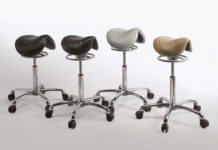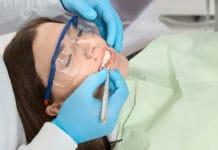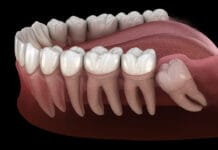As a dental hygienist, I consider myself a preventive oral healthcare specialist. Dental hygienists are one of the few healthcare providers with the primary goal of preventing disease – not just treating it. We have an entire arsenal of preventive procedures we can offer our patients which ultimately leads to reduced cost and discomfort by reducing restorative treatment needs. Most dentists and hygienists recommend sealants for children. However, this preventive procedure should also be utilized for adults. If you are not offering sealants to your adult patients, then read on, because I am going to share science-based evidence which will explain why sealants aren’t just for kids anymore.
The percentage of adults with dental caries is staggering. The prevalence of caries in adults aged 20-34 is 85%, age 35-49 is 94%, and age 50-64 is 96%.1 Clearly, decay is not just a childhood disease; there is not an age limit associated with dental decay. We see it in all ages, so why do we prevent it differently? Studies show pit and fissure sealants provide 100% caries prevention on the occlusal surface, as long as the sealant is retained on the tooth surface. Complete retention rate up to one year is approximately 85% to 100%. Subsequently, retention rate comes down to around 50% in five years time. Once the retention rate comes down to 50%, it requires total replacement of the sealant.6 Sealants are an easy noninvasive procedure we could and should offer all patients, without limitations.
When discussing the placement of sealants on adults, I’ve found one theme consistently used to explain why some clinicians are hesitant, or simply don’t support the idea at all; inadvertently sealing over caries. To this I ask, are you aware, that as a more conservative approach to caries management, the American Dental Association and Centers for Disease Control and Prevention updated their sealant recommendations in support of sealing non-cavitated caries in children, adolescents, young adults, and adults?2,3
To better understand the term “non-cavitated lesion” let’s refer to the American Dental Association’s definition: “Non-cavitated refers to initial caries lesion development before cavitation occurs. Non-cavitated lesions are characterized by a change in color, glossiness or surface structure as a result of demineralization before there is a macroscopic breakdown in surface tooth structure. These lesions represent areas with net mineral loss due to an imbalance between demineralization and remineralization. Reestablishing a balance between demineralization and remineralization may stop the caries disease process while leaving a visible clinical sign of past disease.”4
A study published in 2012, which assessed the possibility of arresting occlusal carious lesions in adults by sealants, as well as to assess the presence of radiographic progression, arrest, and regression of the sealed lesions, concluded after 2-3 years sealants successfully arrested the majority of the lesions. This indicates the possibility of extending the criteria for sealing occlusal carious lesions in adults. By extending the criteria of therapeutic sealing of occlusal carious lesions in adults, it will lead to increased dental health.5 Research indicates if teeth are sealed during initial caries, the number of viable bacteria decreases leading to inhibition of caries progression.6
Another randomized clinical trial, published in 2017, compared success rates between sealant treatment and restorative treatment on occlusal carious lesions. Clinical and radiographic examinations were performed after one year and after 3–4 years. This clinical trial included forty-nine patients aged 8-43. The outcomes depended on the clinical performance of the sealant/restoration, and the control of caries progression observed radiographically. Survival analysis was performed to assess success rates. Over the 3-4 years of monitoring, two sealants were totally lost, 1 needed repair, and 1 showed caries progression, totaling four failures in the sealant group. In the restoration group, one failure was observed (in need of repair). The success rate for the sealant group was 76%, the success rate for the restoration group was 94%. The sealing of occlusal carious lesions in permanent teeth succeeded in controlling caries over a 3–4-year period. However, sealed carious lesions require patient compliance in attending regular follow-ups to control the occurrence of clinical failures of the sealants. Even if the tooth must be restored at a future time, the use of a sealant will postpone the restorative treatment, mineralize the carious tissue beneath the sealant, reduce tissue removal, and ultimately improve tooth prognosis.7
Even though there are multiple studies to support the use and effectiveness of sealants, as well as the recommendation by the ADA, less than 40% of practicing dentists are recommending sealing non-cavitated lesions in children, adolescents, and adults. The majority of the dentists surveyed recommended “watching” the lesion and re-examing in 6 months.8 I personally do not understand this concept. If the lesion will be re-examined in 6 months, why not try to arrest the lesion using a sealant? The survey goes on to give some insight into the reason why most practitioners are not adopting the updated recommendation of the ADA, they include, a firm belief in clinical experience, which has shown that caries will progress under sealants; a concern that sealants do not last; and the lack of third-party reimbursement for sealants in adults.8 It appears as though we are faced with the challenge of overcoming long-standing beliefs based primarily on personal clinical observations that seem to contradict scientific evidence.
Science is ever-changing, and I am personally thankful for the great strides we have made in dentistry. It would be foolish to disregard science-based evidence that could improve the oral health of our patients. Dental hygienists’ job is based on the premise of prevention; we should not allow insurance companies, a poor belief in science, or personal bias stop us from offering preventive services to our patients. I like to allow my patients the opportunity to decide if they prefer to prevent a disease, or just wait and treat it when it becomes necessary.
I have been offering sealants as a preventative treatment to my patients for several years. At first, I thought most adults would decline, however, I was mistaken. Many of my patients took advantage of this procedure, and I have seen it be very successful. I am grateful I worked with a dentist that supported and encouraged this treatment.
If you are not already offering this service to your patients, I hope you will review the research, talk to your dentist, and implement this preventive treatment. The ADA offers a great chairside guide here. Trust me, your patients will thank you for it.
SEE ALSO: Dental Sealants: Saving Teeth Since the 1960s
DON’T MISS: ASTM Mask Levels: What Should Dental Hygienists Wear?
References
- National Institute of Dental and Craniofacial Research. Retrieved from https://www.nidcr.nih.gov/research/data-statistics/dental-caries/adults
- Fontana, J.A. Platt, G. J. Eckert, C. Gonzalez-Cabezas, K. Yoder, D.T. Zero, M. Ando, A.E. Soto-Rojas, M. C. Peters. Monitoring of Sound and Carious Surfaces under Sealants over 44 months. J. Dent Res. 2014 Nov; 93(11): 1070-1075. Retrieved from https://www.ncbi.nlm.nih.gov/pmc/articles/PMC4212464/
- American Dental Association. Retrieved from http://ebd.ada.org/~/media/EBD/Files/ADA_Evidence-based_Sealant_Chairside_Guide.ashx
- Douglas A. Young, DDS, EdD, MBA, MS; Brian B. Nový, DDS; Gregory G. Zeller, DDS, MS; Robert Hale, DDS; Thomas C. Hart, DDS, D.; Edmond L. Truelove, DDS, MSD; American Dental Association Council on Scientific Affairs. The American Dental Association Caries Classification System for Clinical Practice. Retrieved from https://jada.ada.org/article/S0002-8177(14)00029-4/pdf
- Bakhshandeh A, Qvist V, Ekstrand KR. Sealing occlusal Caries Lesions in Adults Referred for Restorative Treatments: 2-3 years of follow-up. Clin Oral Investig. 2012 Apr; 16(2):521-9. Retrieved from https://www.ncbi.nlm.nih.gov/pubmed/21479565
- Athira Sreedevi, Shamaz Mohomed. Sealants, Pit and Fissure. StatPearls Publishing; 2018 Jan. Retrieved from https://www.ncbi.nlm.nih.gov/books/NBK448116/
- Alves LS, Giongo FCMS, Mua B, Martins VB, Barbachan E Silva B, Qvist V, Maltz M. A Randomized Clinical Trial on the Sealing of Occlusal Carious Lesions: 3-4 year results. Braz Oral Res 2017 Jun 5;31:e44. Retrieved from https://www.ncbi.nlm.nih.gov/pubmed/28591240
- Jean A O’Donnell, Adriana Modesto, Marnie Oakley, Deborah E. Polk, Benita Valappil, Heiko Spallek. Sealants and Dental Caries. J Am Dent Assoc. 2013 Apr; 144(4): e24-e30. Retrieved from https://www.ncbi.nlm.nih.gov/pmc/articles/PMC3676186/












